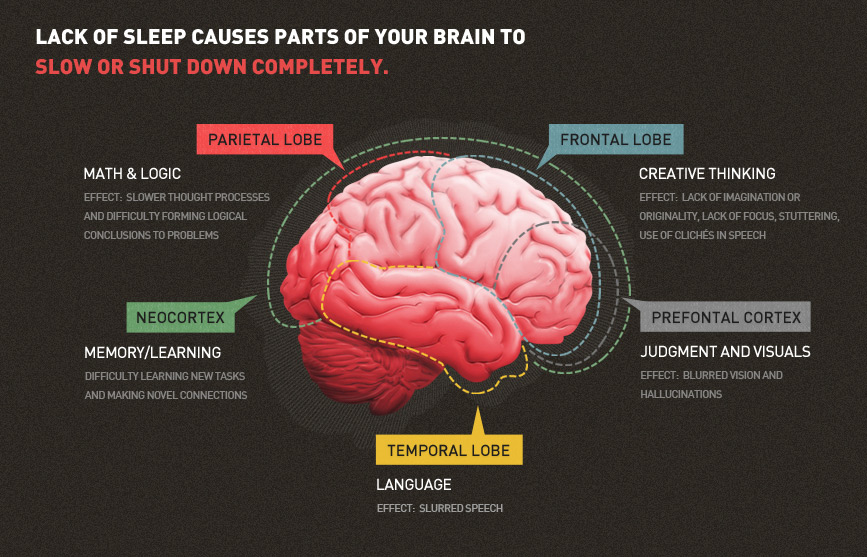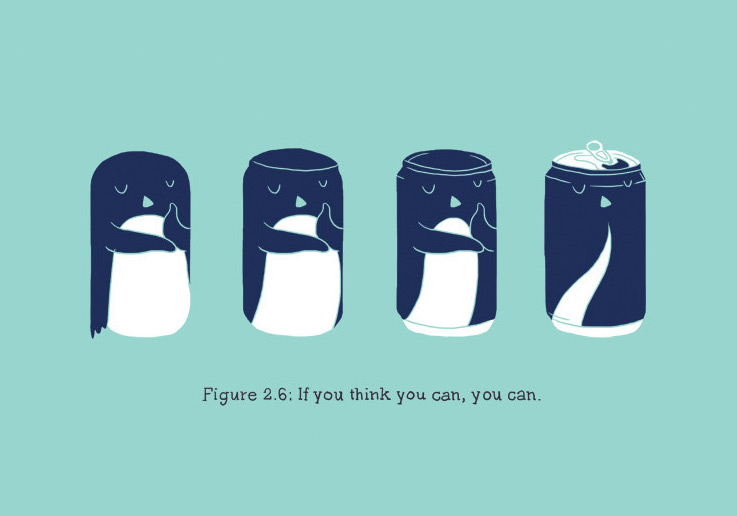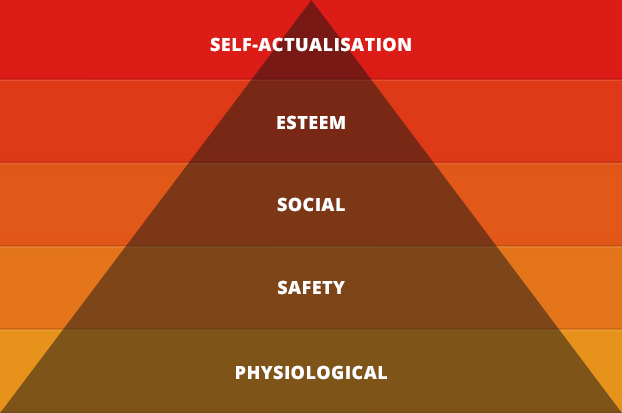
This article is part of the “Starting Up Smarter” series, where I try to share what I have learned running Erasmusu.com since 2008. I hope that it proves useful for project managers, developers, designers or any other crazy, like-minded individual, who finds pleasure in creating things. If you’re one of the above, follow me on Twitter.
What motivates us to create things?
Have you ever felt the rush that the early stage of a new project gives? Or when a new idea takes shape in your brain and looks set to turn into something truly epic, and you feel like nothing can stop you? How can somebody spend weeks deluding themselves by working on an free app without receiving any money in return?
Have you ever wondered what motivates you to do what you do?

All human beings have, in higher or lower levels, a creative ability. In fact, coupled with our ability to use tools, our high levels of creativity are one of the main characteristics that separate us from other animals (though this isn’t to say that there aren’t any other creative species out there).
And on the other hand (because they aren’t the same thing), we are also equipped, to a greater or lesser degree, with the ability to motivate ourselves to take these actions.
Creativity and motivation are not the same thing, but are related
We’re not all the same blank canvas, that is to say, we’re not all born with the same gifts. Some people have more creative ability than others, although like everything, it’s an aspect that you can work on and develop. Perhaps the most fundamental stage of development is during childhood. Childhood education programs, and also parents, should take encouraging creativeness, innovation, design and problem resolution very seriously. What’s more, this can also boost children’s motivation, help them to learn the mechanics behind staying focussed on projects and maintain motivation over time.
The creative process is truly interesting, and many different factors collate together in its origins: memorized information, previous experiences, environmental analysis via the senses, internal mechanisms that design working solutions, reptilian brain instincts, etc. What’s more, many of these mental tools function on a subconscious level or during REM phase dreams.
Haven’t you ever woken up with a mental message solving a problem that was indecipherable the day before? Hasn’t a «Eureka!» moment ever hit you whilst completing a task totally unrelated to the original? Without knowing it, your brain works subconsciously to resolve problems. It’s so creative! The book “Take a Nap! Change your life” describes various experiments where different puzzles and problems were given to participants. Those that slept halfway through the exercises succeeded in 60% of them, found better shortcuts and solved problems more efficiently. The brain was working on them whilst they slept!

But we mustn’t forget that motivation is as, or more, important than creative ability. Without motivation, no matter how much creativity we may potentially have, this creative process cannot take place because we wouldn’t feel like doing anything! Motivation drove our ancestors to move around the world, to learn and survive. They had very old survival methods, and so they sat in their caves looking at the ceiling.
If you ask any kind of entrepreneur, artist or inventor what motivates them to do what they do, they will throw themselves into describing the feelings that caused it. They would tell you that they “do or don’t feel it”, “that it comes from within” and this feeling is impulsive and compels them to move forwards. In the film Indie Game The Movie (truly inspiring, by the way) one of the creators behind Super Meat Boy, Tommy Refenes, states: “I am determined to make video games, and I make video games because I can”. This is a powerful statement, even worthy of Chuck Norris status, but I believe his reasoning is confused with plausibility.
So, what’s the real reason? What really motivates us?
We create things because we like to build them
I see it more simply than this. But many people don’t seem to believe it.
In the film The Social Network, they would have us believe that the motivation that drove Mark Zuckerberg to create Facebook was increasing his chances with girls, moving up the social ladder and getting into private clubs at Harvard. Although, I suppose these could be script necessities that make the film more interesting, and give us an excuse to parade around scantily clad students.
Either you like Mark or you don’t, but regarding this he said something that made a lot of sense: «They just can’t wrap their head around the idea that someone might build something because they like building things.»
Going through all the stages of the creative process, from the original idea, to realisation, analysis, design, prototyping, testing with real users, development and everything else; it’s simply fun. It is an enjoyable process!
Enjoy creating things that didn’t exist before. Before «were not» and now «there are». It’s incredible!
It’s not just creative ability. Certain people have more motivation than others.
“I am I and my circumstance” said Jose Ortega y Gasset. We are all genetically different and we all have different learning processes. With this, some people feel a greater need to create than others, and they are capable of maintaining their motivation for longer.
Physically, there are many factors in play. Amongst them, dopamine plays a very important role. It pumps up your body every day to suppress tiredness, it works you up when you’re in love and it gets you addicted to Lost and Twitter. A system of desire for novelties is anchored to dopamine. In fact, experiments have been conducted on rats in which their bodily levels of dopamine were reduced. The results showed that the rats lost all desire to go for their food, and consequently literally died of hunger. It was like a case of: “if you have to go, you go, but to go for no reason is nonsense”.
On the contrary, environment, education and sociological processes also become involved. If a child grows up in a creative environment where they’re given freedom to create and room to confront problems, their chances of growing up creative are higher.

There are even studies that suggest that firstborn children are more authoritative and later born children are more creative.
Who knows? The creative process is so complex, and to narrow down all the different factors contained within it is no easy feat.
Let’s be clear about one thing: it’s the first word you write that begins the book. Notch makes this clear in an interview that appears in a documentary about the creation of Minecraft (highly recommended, also). He said:
«– Notch, what would you say to people who are at home thinking about becoming video game developers like you?”
“– I would tell them to stop thinking and start making video games.»
We don’t just do it because it’s cool, we do it because we want others to see, use and recognize our work.
Anybody who says the opposite is a liar. Nobody creates a video game and then hides it under the bed so nobody can play it. A writer doesn’t write a novel that they love and then throws it in the bin because they only liked writing it.
Even if the product of your work can’t be linked directly to you (e.g, if you’re a programmer in a software company), you’d still be unhappy if your colleagues didn’t value your work or congratulate you when you do something great.

This is why gamification works so well on sites like Dribbble. The wonderful prize you receive when your work appears on a cover is the satisfaction of knowing that others liked it. And this can be truly addictive, because it stimulates your dopamine levels. I am willing to bet that this year, like all others, the programming and designer challenges will receive a huge crowd. People really enjoy participating because it presents a challenge, and helps their work gain recognition.
Human beings are social creatures, our genetics and process of evolution has designed us in a way that makes it virtually impossible to be happy unless we relate to other human beings (think about isolated individuals; they are less likely to have genetic descendants, and so these genes are not passed on to the next generation). And all this is closely related to the fact that we like other human beings to recognize our work.
Once our basic needs are covered, Maslow’s pyramid indicates that the next thing we seek is self-fulfilment.
So don’t feel bad for wanting zillions of people to know about your creations, they use them, they value them and will compliment you for having created something out of nothing.
It’s in our nature.
Money is a consequence, not a motive
I don’t believe that there’s a single successful entrepreneur whose only motivation was the money. People who only want money play the lottery. Entrepreneurs and artists are moved by other reasons.
Money is a consequence of doing it right. We need money to continue building and to be able to dedicate ourselves to what we love.
In the words of Richard Branson, founder of Virgin: “Entrepreneurship is about turning what excites you in life into capital, so that you can do more of it and move forward with it.”
Bonus: curiosities on motivation and creativity
There’s lots of material on this. I’ll share some sources with you that I think are quite good:
- One of my favourites is the chapter «What motivates people?» in the book “100 Things Every Designer Needs to Know About People”. A truly essential book.
- “Lateral thinking” by Edward de Bono is an un-missable classic.
- «Side Projects: From Idea to Launch«, a presentation video and some slides that will motivate you start a «pet project». By Sacha Greif.
- If you prefer something a bit more recent, this week I was lucky enough to be one of the first people to read Jenius Book by @joshlong, that explores how creative entrepreneurs can design better businesses.

Some of the most prominent things I’ve learned about motivation are:
- We feel more motivated the closer we are to the target. Which do you think is more effective? A cinema loyalty card where you have to get six stamps to see a free film, or, a card needs eight stamps but that starts with two stamps already filled? The answer is: people are more eager to fill up the second card through the illusion of being closer to the goal than the first. Ran Kivetz yielded results on this when he investigated it in 2006. Bearing this in mind, I took the wise decision to start the “profile completion bar” on Erasmusu profiles with a percentage already filled.
- We enjoy it more when we anticipate the reward. Or at least our brain reflects greater activity when we mentally anticipate the reward, compared to when we actually get it. Haven’t you ever felt like when, after months and months of working on a project, you reach the finale and feel a little “….Now what?”
- Dopamine compels people to develop information addictions. Have you ever felt the addiction that calls out from Whatsapp, Twitter, Google Analytics, Facebook or writing emails? Have you ever started searching for something on Google and subconsciously entered into «surfing zombie» mode? And it’s over half an hour until you realise? All these examples stem from the dopamine system.
- Systems of «wanting» (dopamine) and «liking» (opioid) are closely related. The “wanting” system motivates us to act and the “liking” system gives us the satisfaction of having acted. If your dopaminergic system is stronger than the opioid, you risk entering into an endless cycle in which the need to search never disappears. Has this ever happened to you? I’m afraid this happens to me frequently.
- The feeling of control motivates us. Our “reptilian” brain likes to control, and anything beyond our control is a potential danger. Which is why we like to sit in front of the fireplace and watch the fire; it’s a controlled hazard. In the same way that we love horror movies or amusement parks, this sense of control motivates us to become involved in such actions.
- We motivate ourselves subconsciously. An investigation by Custer Ruud and Henk Aart (2010) showed that some of our goals are subconscious. Our subconscious eventually defines them and they emerge into our conscious thoughts. This scares us; it’s an «inception» in all senses.
- Notifications stimulate our dopamine. Have you ever heard of «Pavlov’s Dog«? Unpredictability stimulates our dopamine levels. Now think about all the notifications we receive from Whatsapp, emails, Twitter, etc.; they pop-up from time to time, but we never know exactly when. You could also compare it to winning on slot machines. Every time you hear a notification sound from Whatsapp you turn into Pavlov’s Dog; this stimulation is associated with certain behaviors, your body releases dopamine and the search for information begins again.
- Insufficient, or bite size, information is even more addictive. Our dopaminergic system is stimulated more when our wants are not fulfilled. Here’s a practical example: say you’re a games developer and make a demo, a good idea would be to cut the demo’s screen in half and present it unfinished. The sensation of incompletion will be massive, and this is likely to increase your sales. That’s exactly what the game Limbo did (which is an example of game design that’s so good it deserves a post all to itself).
- Turning preconceived notions on their head and seeing them from different angles can reveal innovative ideas.
For example: «Let’s ban cars in the city.» Analyzing the pros and cons of this can lead to more innovative ideas: «let’s ban cars in the city at certain times to reduce CO2 emissions», or, «let’s ban petrol cars and only allow electric». Analyse the things you do daily in work, take your preconceived ideas and turn them on their head to create something the complete opposite. Although most of the time it might seem like nonsense, it doesn’t matter, in the process you’ll create fresh neural connections that will lead to other innovative ideas. - Teach others about what you do and how you do it. People like to participate in other’s creative process. I love it when Notch programs in real time and I find I can learn in the same process. Furthermore, the feedback you receive from people who see how you build your creations can be incredibly useful.
Conclusion
When I think about Erasmusu, my motivation is not the money I may or may not earn, but the enjoyment of creating new sections, improving on existing ones and the rush that comes from finding new business. And on the other hand, it motivates me to think of the 250,000 + students who will use it every month. As mentioned earlier, my colleagues also recognize the work and time that I put in, so I feel self-fulfilled. That’s to say, it backs up everything that I believe is a fundamental reason as to why we create things. And this can apply to the rest of my projects, such as California Office, my 3D designs, and all the other things I do.
If you were wondering, the answer is «yes», I have pinched the colors of the Maslow Pyramid from Clear. I also want to give credit to XKCD, I’ve used some of their fab comics. The brain image is from a great artist named Kurt Michelson and the penguins from Lim Heng Swee.
Push your projects to the max, and follow me on Twitter if you like the same things.
And what about you? What motivates you? Why do you create things? Do you disagree with something I’ve said? Leave us a comment and tell us 🙂
Very true…to be creative one has to be at least a little crazy…..thinking differently makes you create something new and extraordinary.